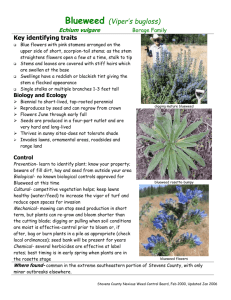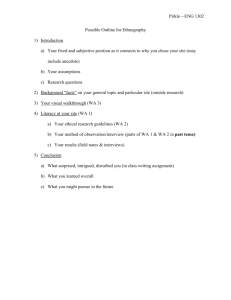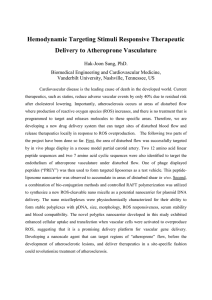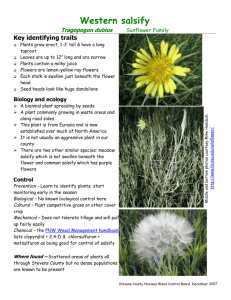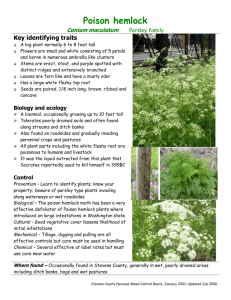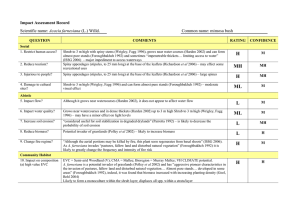Horseweed (marestail)
advertisement
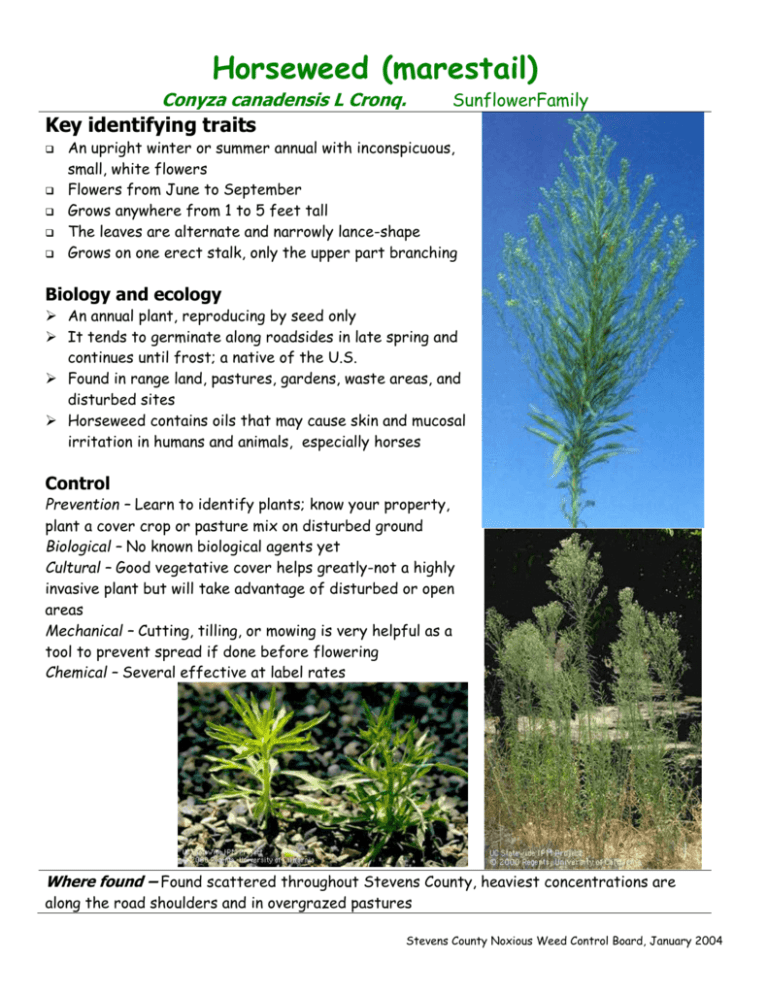
Horseweed (marestail) Conyza canadensis L Cronq. SunflowerFamily Key identifying traits An upright winter or summer annual with inconspicuous, small, white flowers Flowers from June to September Grows anywhere from 1 to 5 feet tall The leaves are alternate and narrowly lance-shape Grows on one erect stalk, only the upper part branching Biology and ecology An annual plant, reproducing by seed only It tends to germinate along roadsides in late spring and continues until frost; a native of the U.S. Found in range land, pastures, gardens, waste areas, and disturbed sites Horseweed contains oils that may cause skin and mucosal irritation in humans and animals, especially horses Control Prevention – Learn to identify plants; know your property, plant a cover crop or pasture mix on disturbed ground Biological – No known biological agents yet Cultural – Good vegetative cover helps greatly-not a highly invasive plant but will take advantage of disturbed or open areas Mechanical – Cutting, tilling, or mowing is very helpful as a tool to prevent spread if done before flowering Chemical – Several effective at label rates Where found – Found scattered throughout Stevens County, heaviest concentrations are along the road shoulders and in overgrazed pastures Stevens County Noxious Weed Control Board, January 2004

